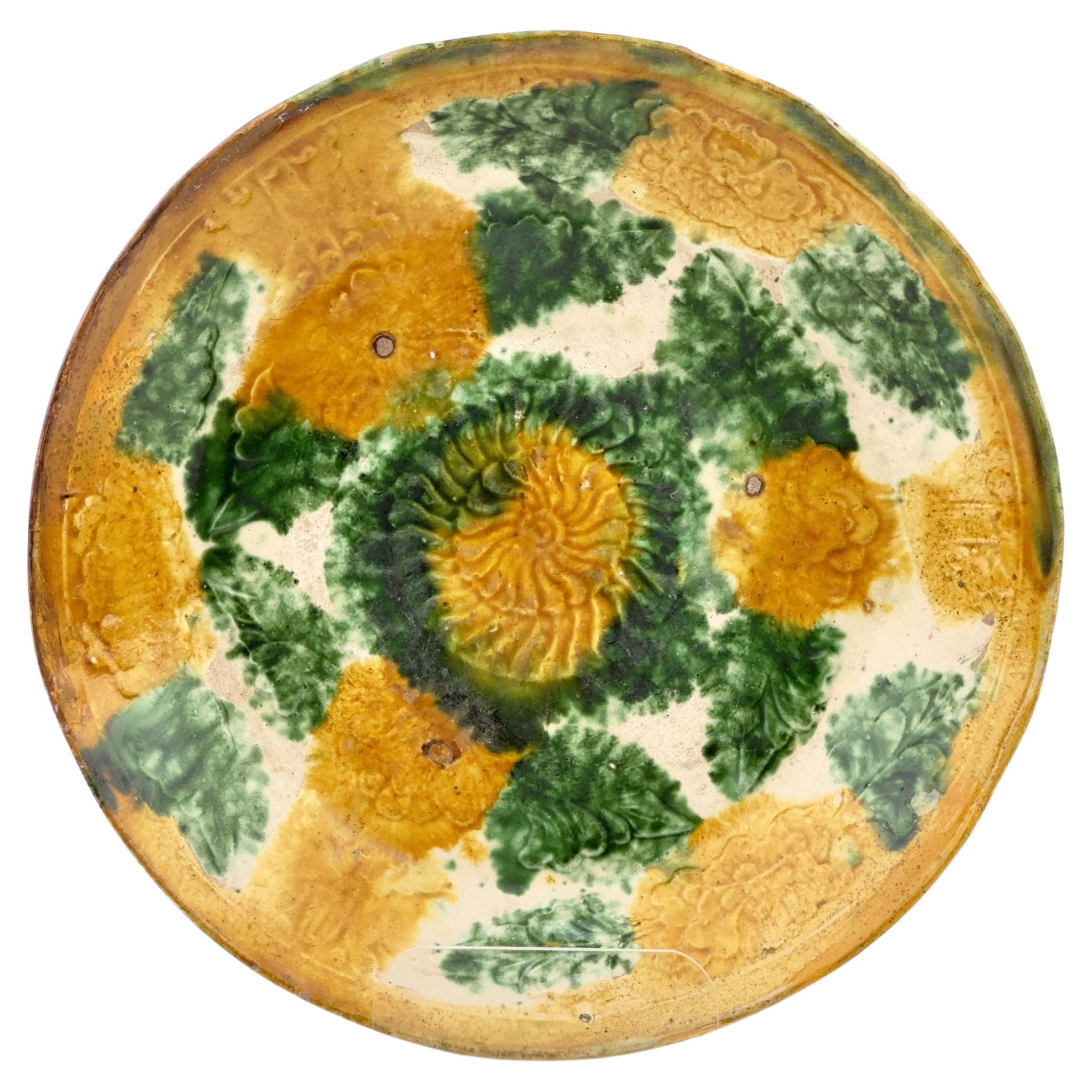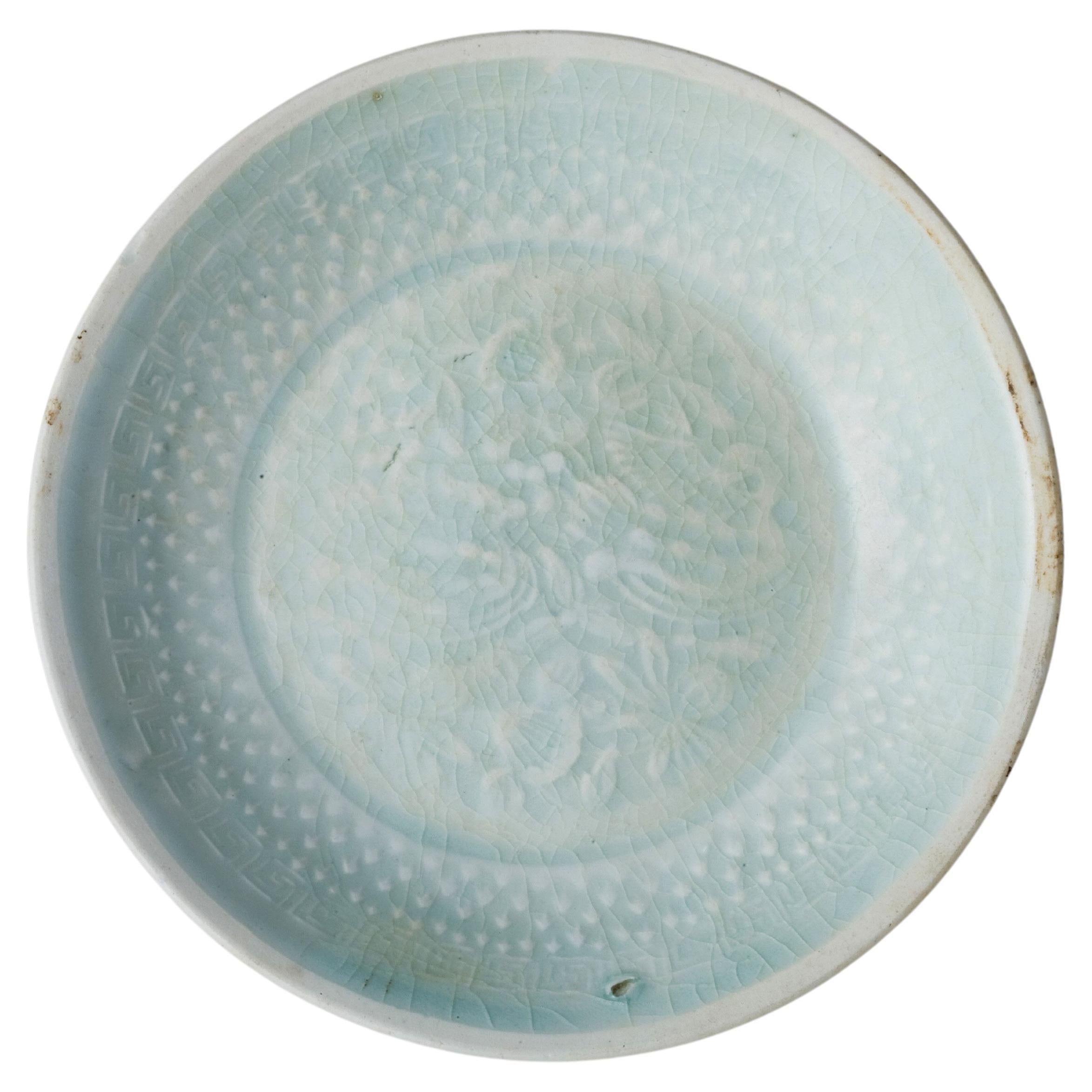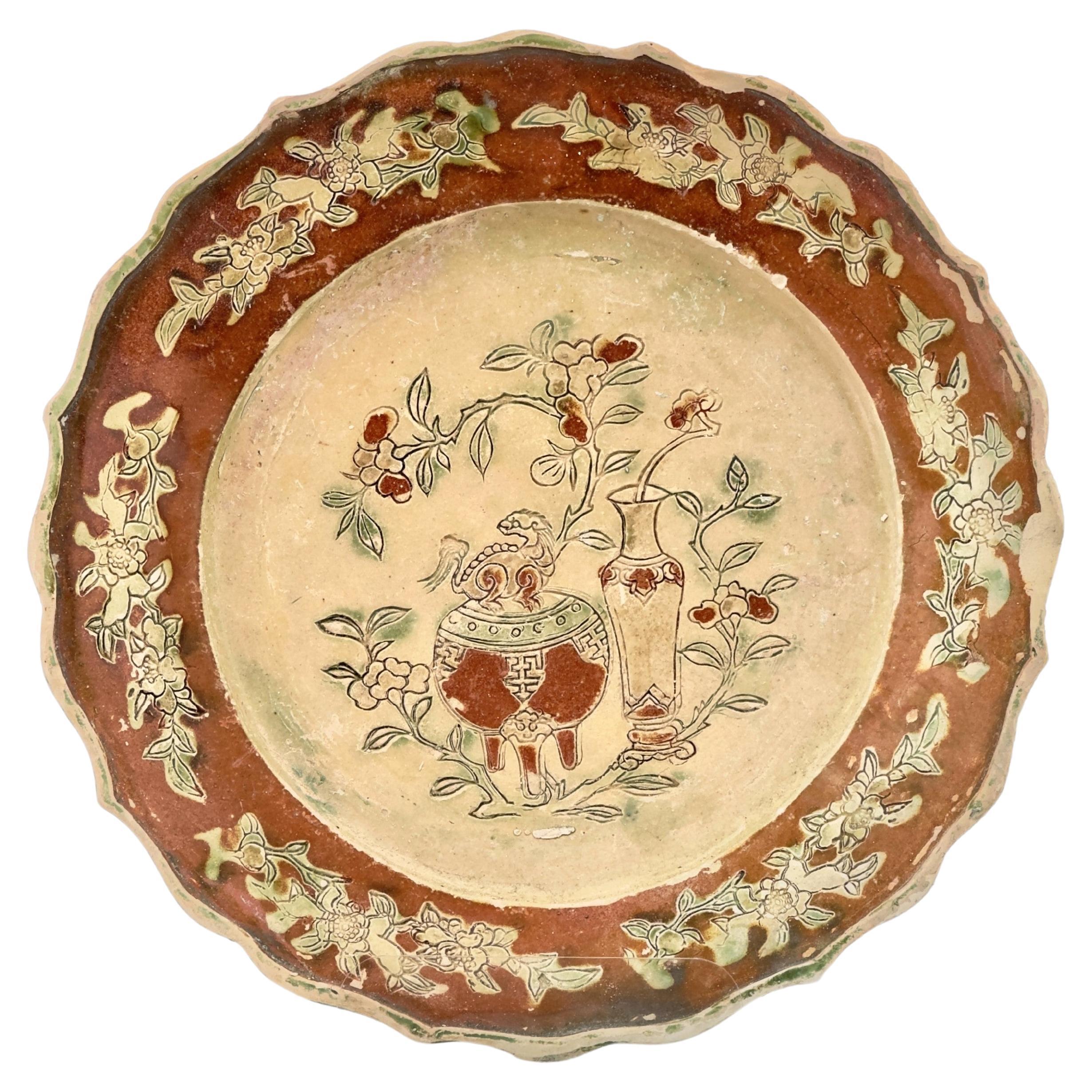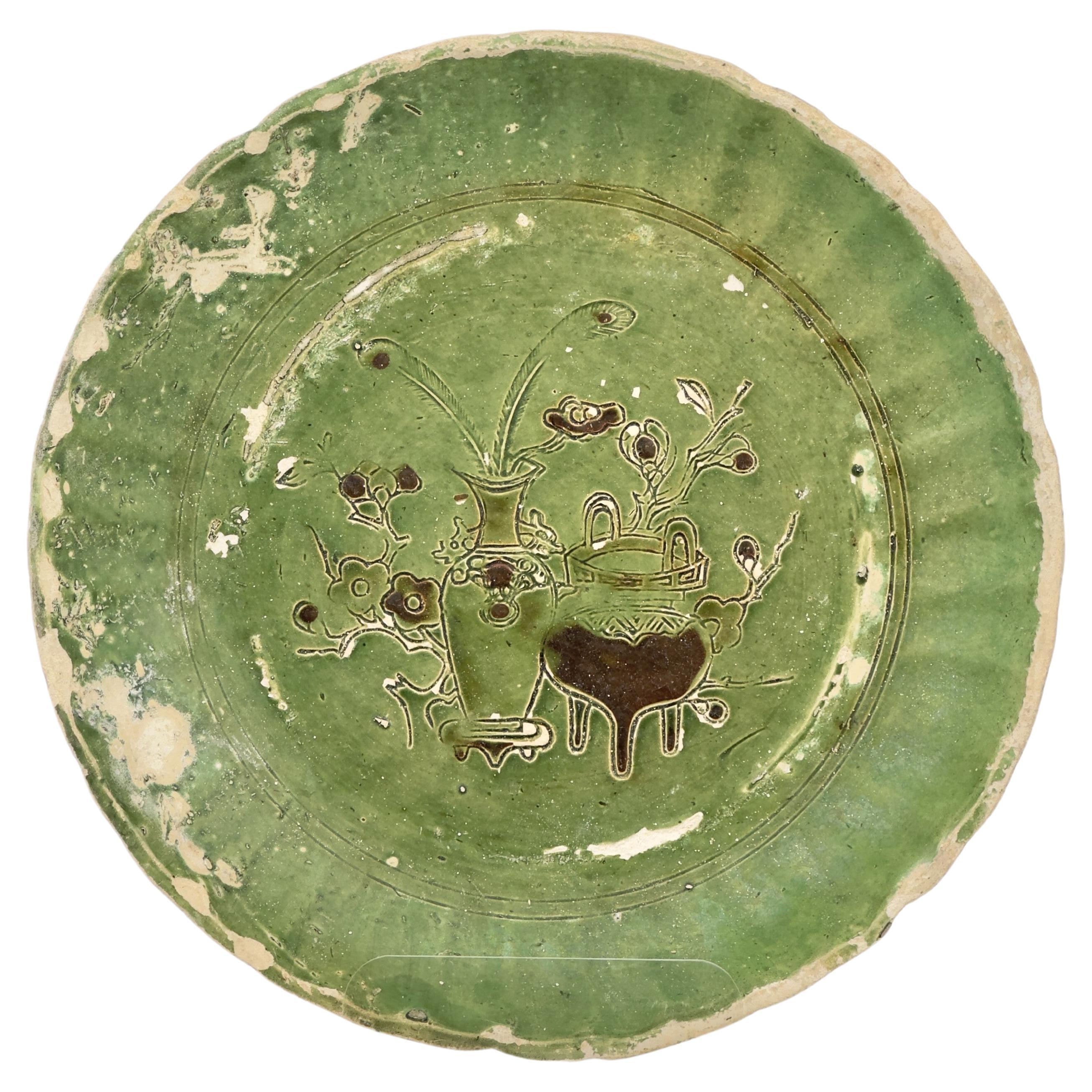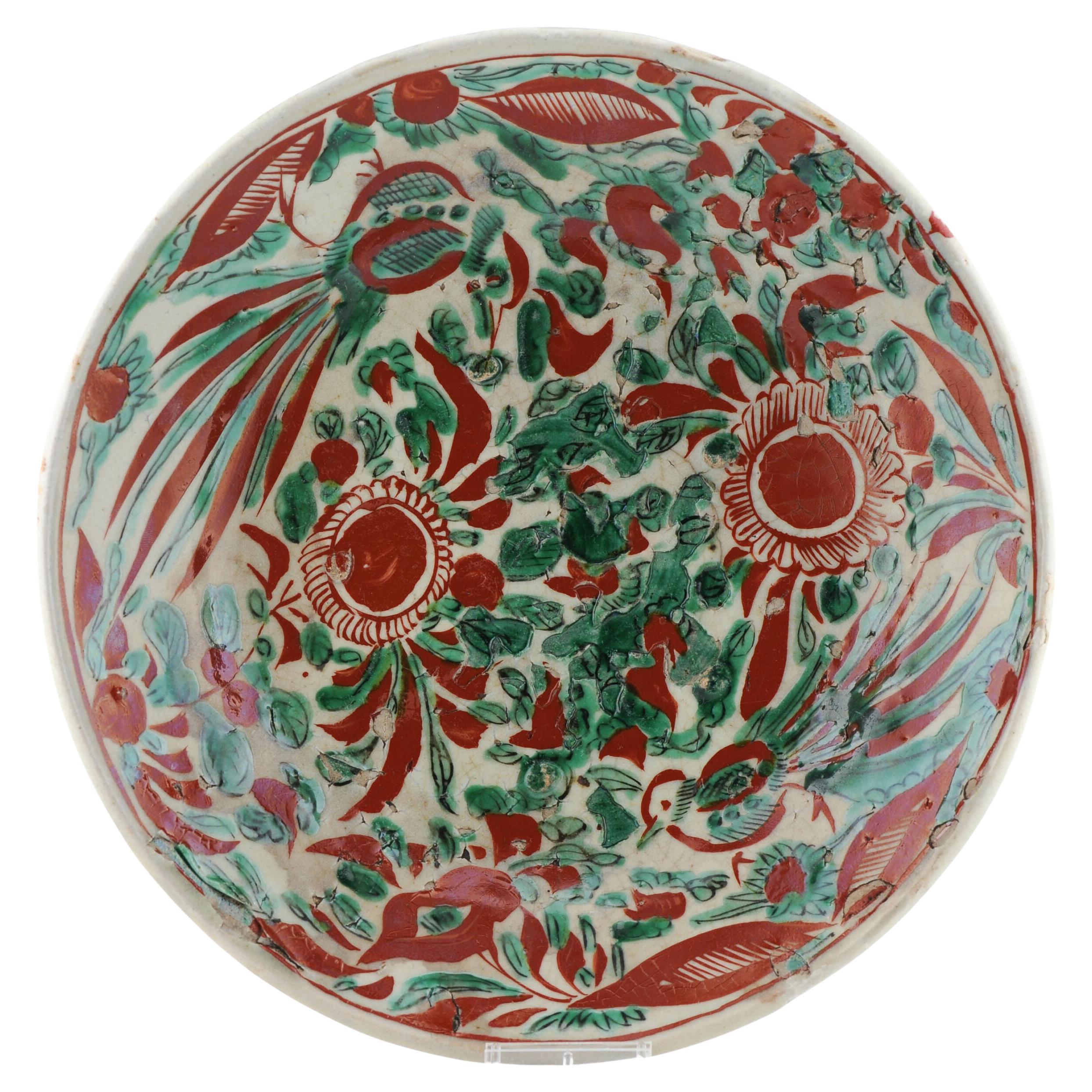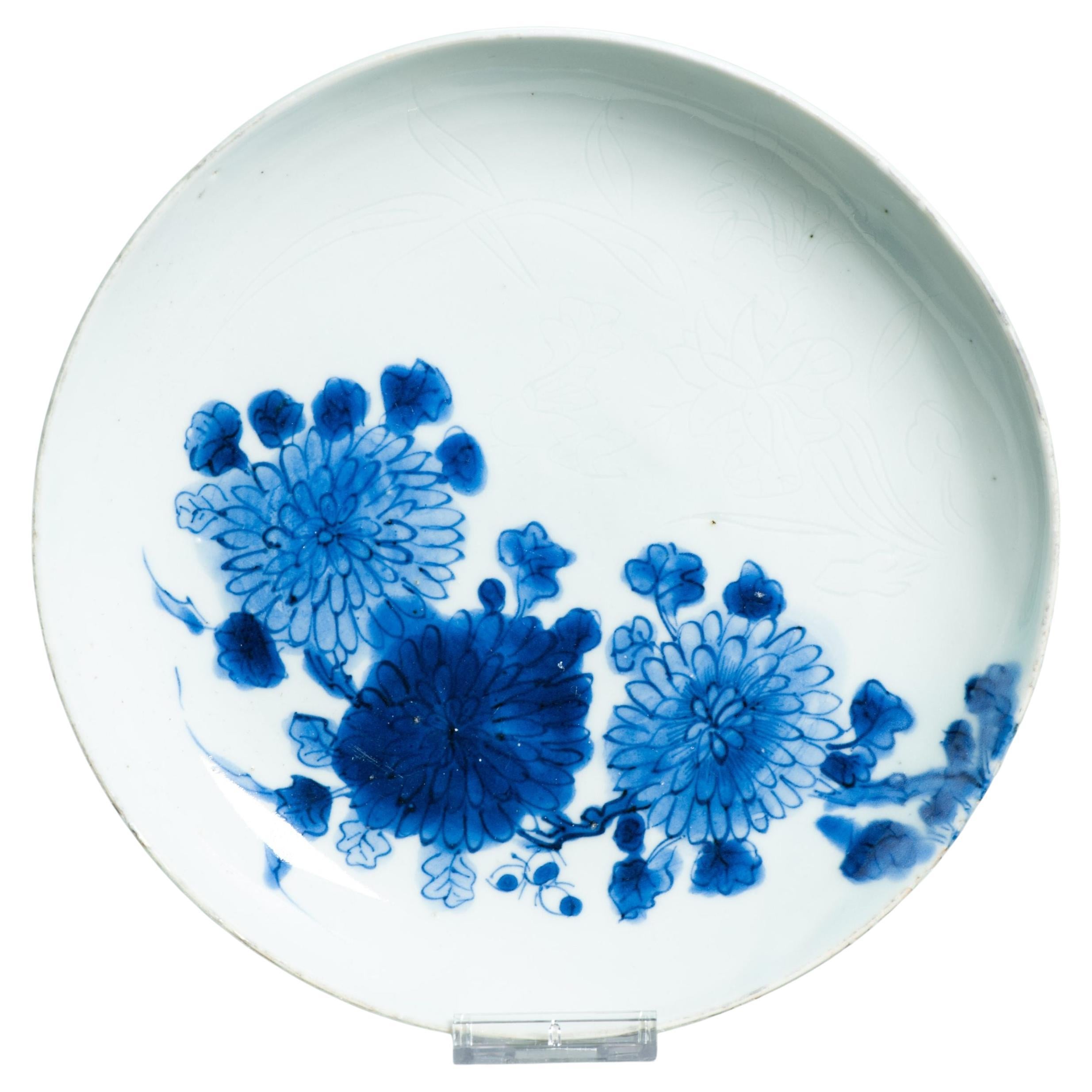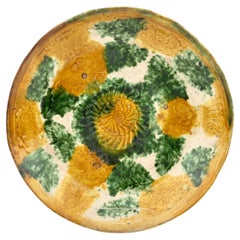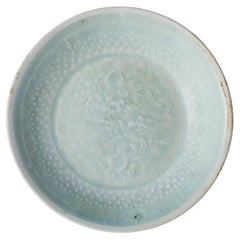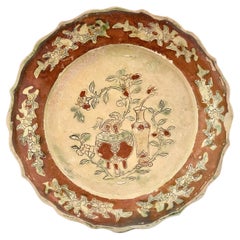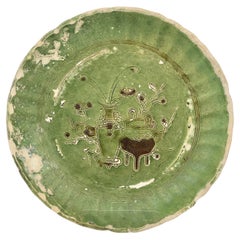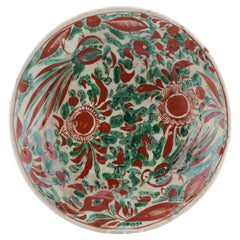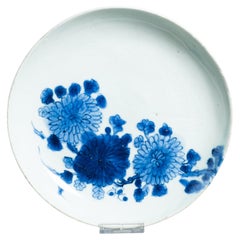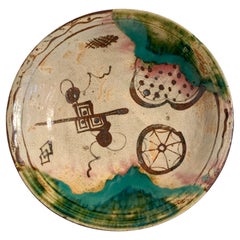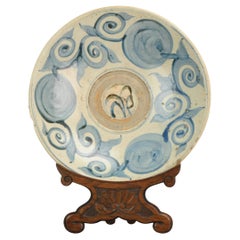Items Similar to Sancai-Glazed ‘Floral’ Dish, Liao Dynasty(916~1125)
Want more images or videos?
Request additional images or videos from the seller
1 of 15
Sancai-Glazed ‘Floral’ Dish, Liao Dynasty(916~1125)
$3,835
$5,90035% Off
£2,909.91
£4,476.7835% Off
€3,327.22
€5,118.8035% Off
CA$5,356.46
CA$8,240.7035% Off
A$5,955.65
A$9,162.5435% Off
CHF 3,109.71
CHF 4,784.1735% Off
MX$72,494.75
MX$111,530.3935% Off
NOK 39,678.56
NOK 61,043.9435% Off
SEK 37,176.92
SEK 57,195.2635% Off
DKK 24,831.67
DKK 38,202.5635% Off
Shipping
Retrieving quote...The 1stDibs Promise:
Authenticity Guarantee,
Money-Back Guarantee,
24-Hour Cancellation
About the Item
Well potted with shallow sides rising from a short foot, the interior molded with a single chrysanthemum surrounded by peony blossoms picked out in amber and with green leaves against a creamy ivory ground, the exterior glazed in green stopping well above the foot. "Iridescence" is observed in surface.
Date : Liao Dynasty(916~1125)
Type : Sancai-Glazed Dish
Size : 4cm (Height), 17cm(Diameter)
Condition : Excellent
Provenance : Acquired in late 1990s from Hongkong
Reference :
1) Christies London 30 NOV – 7 DEC 2017 - The Art of China: Online Winter Sale - Lot 65 (USD 6,875, Type: Closely related)
2) China Guardian 2017 Spring Auctions - Ancient Chinese Ceramics from the Tang to the Song Dynasty - Lot 704 (HKD: 53,100, Type: Closely related)
* Tang Dynasty San-cai
Tang Sancai glazed pottery refers to a type of Chinese ceramic that became famous during the Tang Dynasty (618-907 AD). "Sancai" translates to "three colors," which typically are brown, green, and cream or white. Occasionally, blue was also used. These colors were achieved through the use of metallic oxides in the glaze, which, when fired at high temperatures, produced vivid colors that have retained their brilliance over centuries.
The art of Sancai pottery is characterized by its decorative and functional purposes. It includes items such as figurines, vessels, and architectural elements. Tang Sancai ceramics were often used as burial items, intended to accompany the deceased in the afterlife. The pieces frequently featured images of people, animals, and mythical creatures, reflecting the Tang Dynasty's cosmopolitan culture and the religious and mythological beliefs of the time.
The distinct look of Sancai comes from the way the glazes melt and run together, creating a flowing effect that makes each piece unique. This pottery is a valuable part of China's cultural heritage and provides insight into the sophisticated ceramic technology of the Tang Dynasty.
- Dimensions:Height: 0.79 in (2 cm)Diameter: 6.7 in (17 cm)
- Style:Tang (Of the Period)
- Materials and Techniques:
- Place of Origin:
- Period:
- Date of Manufacture:916-1125
- Condition:Minor fading.
- Seller Location:seoul, KR
- Reference Number:1stDibs: LU9577239368752
About the Seller
4.8
Gold Seller
Premium sellers maintaining a 4.3+ rating and 24-hour response times
Established in 1999
1stDibs seller since 2023
38 sales on 1stDibs
Typical response time: <1 hour
- ShippingRetrieving quote...Shipping from: seoul, Korea South
- Return Policy
Authenticity Guarantee
In the unlikely event there’s an issue with an item’s authenticity, contact us within 1 year for a full refund. DetailsMoney-Back Guarantee
If your item is not as described, is damaged in transit, or does not arrive, contact us within 7 days for a full refund. Details24-Hour Cancellation
You have a 24-hour grace period in which to reconsider your purchase, with no questions asked.Vetted Professional Sellers
Our world-class sellers must adhere to strict standards for service and quality, maintaining the integrity of our listings.Price-Match Guarantee
If you find that a seller listed the same item for a lower price elsewhere, we’ll match it.Trusted Global Delivery
Our best-in-class carrier network provides specialized shipping options worldwide, including custom delivery.More From This Seller
View AllSancai-glazed ‘floral’ dish, Liao dynasty(916~1125)
Located in seoul, KR
Well potted with shallow sides rising from a short foot, the interior molded with a single chrysanthemum surrounded by peony blossoms picked out in yellow and with green leaves again...
Category
Antique 15th Century and Earlier Hong Kong Tang Antiquities
Materials
Pottery
$3,495 Sale Price
50% Off
A Molded Qingbai 'Flowers' Dish, Southern Song Dynasty
Located in seoul, KR
The plate depicted here exhibits the intricate floral patterns and lotus motifs that are typical of Southern Song designs. The central floral motif captures the essence of Oriental b...
Category
Antique 15th Century and Earlier Hong Kong Antiquities
Materials
Ceramic
$1,560 Sale Price
60% Off
Three-glazed Earthenware dish circa 1725, Qing Dynasty, Yongzheng Reign
Located in seoul, KR
Painted with yellow, brown and green glazes against the straw-glazed ground, the cavettos with a broad brown-glazed band, the exteriors green-glazed.
Period : Qing Dynasty, Yongzhen...
Category
Antique 1720s Vietnamese Qing Decorative Bowls
Materials
Earthenware
Green-Glazed Earthenware Dish Circa 1725, Qing Dynasty, Yongzheng Reign
Located in seoul, KR
It is the rare earthenware among those excavated from the Ca Mau Ship, and it is a green-glaze work that is especially unique. Although it is in very worn condition, it is a valuable...
Category
Antique 1720s Vietnamese Qing Antiquities
Materials
Earthenware
Annamese Stoneware Dish with Lotus Motif, 15-16th Century Vietnam, Le Dynasty
Located in seoul, KR
This Annamese ceramic dish features a central lotus motif, enclosed by a thin circular border. The rim is adorned with intertwining vine patterns and swirling motifs. The dish has a gently curved form with a well-proportioned depth and a neatly finished rim.
Dates : 15th century Le Dynasty
Region : North Annam, Vietnam
Type : Dish
Found/Acquired : Southeast Asia , South China Sea, Hoi An Ship
Reference : Double checked with reference to the original catalogue
Butterfield Treasures Hoi An Hoard Auction Catalogs / San Francisco Butterfields 2000
* Vietnamese trade ceramics
Around the mid-14th century, Vietnam developed its ceramics production technology by producing blue and white porcelain, and began to export it overseas. During this period, China Ming Dynasty implemented a policy of lifting the ban from 1371 to 1657 and restricted foreign trade. This served as a good opportunity in the trade history of Vietnamese ceramics, and ceramic exports...
Category
Antique 15th Century and Earlier Vietnamese Ming Antiquities
Materials
Stoneware
$1,393 Sale Price
30% Off
Qingbai Floriform Dish, Song-Yuan Dynasty
Located in seoul, KR
The dish has a scalloped rim, which gives it a flower-like appearance. The wavy edges are characteristic of the Song dynasty ceramics, often inspired by natural forms such as flowers...
Category
Antique 15th Century and Earlier Hong Kong Antiquities
Materials
Ceramic
$2,686 Sale Price
55% Off
You May Also Like
Antique Chinese Porcelain Dish Swatow Flower and Fenghuang, 16/17th Century
Located in Amsterdam, Noord Holland
A very nicely decorated large dish from around 1600-1630.
The robustly potted rounded sides rising from a short tapering foot to an everted rim, brightly decorated in Red and green w...
Category
Antique 17th Century Asian Ming Decorative Dishes and Vide-Poche
Materials
Porcelain
$2,732 Sale Price
20% Off
Rare Early 17th C Chinese Kosometsuke Dish – Anhua Decoration – Ming Dynasty ...
Located in Amsterdam, Noord Holland
A superb and rare Chinese blue and white porcelain dish, dating to the early 17th century, late Ming dynasty, and produced at the Jingdezhen kilns for the Japanese market. This piece...
Category
Antique 17th Century Chinese Ming Ceramics
Materials
Porcelain
Japanese Ao-Oribe Glazed Stoneware Dish, Early Edo Period, 17th Century, Japan
Located in Austin, TX
A fine and rare Japanese ao-oribe glazed minoyaki stoneware dish, late Momoyama or early Edo period, 17th century, Japan.
The circular dish of wheel thrown ...
Category
Antique 17th Century Japanese Edo Ceramics
Materials
Stoneware
Vietnamese Earthenware Dish Charger Flowers Motiff Swatow Style, 17th Century
Located in Amsterdam, Noord Holland
Large and very nice Blue and White Charger/Dish from the Jiajing Period This type of dish, with undecorated sides and flowing, somewhat 'fatty' glaze and greyish blue colour characte...
Category
Antique 17th Century Qing Dinner Plates
Materials
Porcelain
$1,916 Sale Price
20% Off
Jiajing/Wanli Period Chinese Porcelain Dish Charger Floral Swatow Antique, 17 C
Located in Amsterdam, Noord Holland
Large and very nice Blue and White Charger/Dish from the Jiajin/Wanli Period.
Dish on footring, decorated in underglaze blue. In the centre a circle containing a flying crane between cloud...
Category
Antique 17th Century Qing Decorative Dishes and Vide-Poche
Materials
Porcelain
$957 Sale Price
20% Off
Chinese Qingbai Lobed Foliate-Rim Bowl, Song Dynasty
Located in Houston, TX
Chinese Qingbai lobed foliate-rim bowl, Song Dynasty, porcelain shallow bowl resting upon tapered footed base. Peony flower decoration incised upon interior of bowl. Known colloquial...
Category
Antique 15th Century and Earlier Chinese Decorative Bowls
Materials
Earthenware
More Ways To Browse
Song Dynasty
Pottery Mold Glaze
Song Dynasty Furniture
Chinese Guardian
Song Dynasty Ceramics
Chinese Ceramics Song Dynasty
Ancient Chinese Ceramics
Green Asian Vessels
Metallic Pottery
Green And Cream Pottery
Antique Blue And White Figurines
Sancai Glazed
Chinese Sancai
Chinese Green Glazed Animal
Chinese Glazed Figurine
Chinese Ceramic Figurine
Sancai Pottery
Chinese Footed Dish
